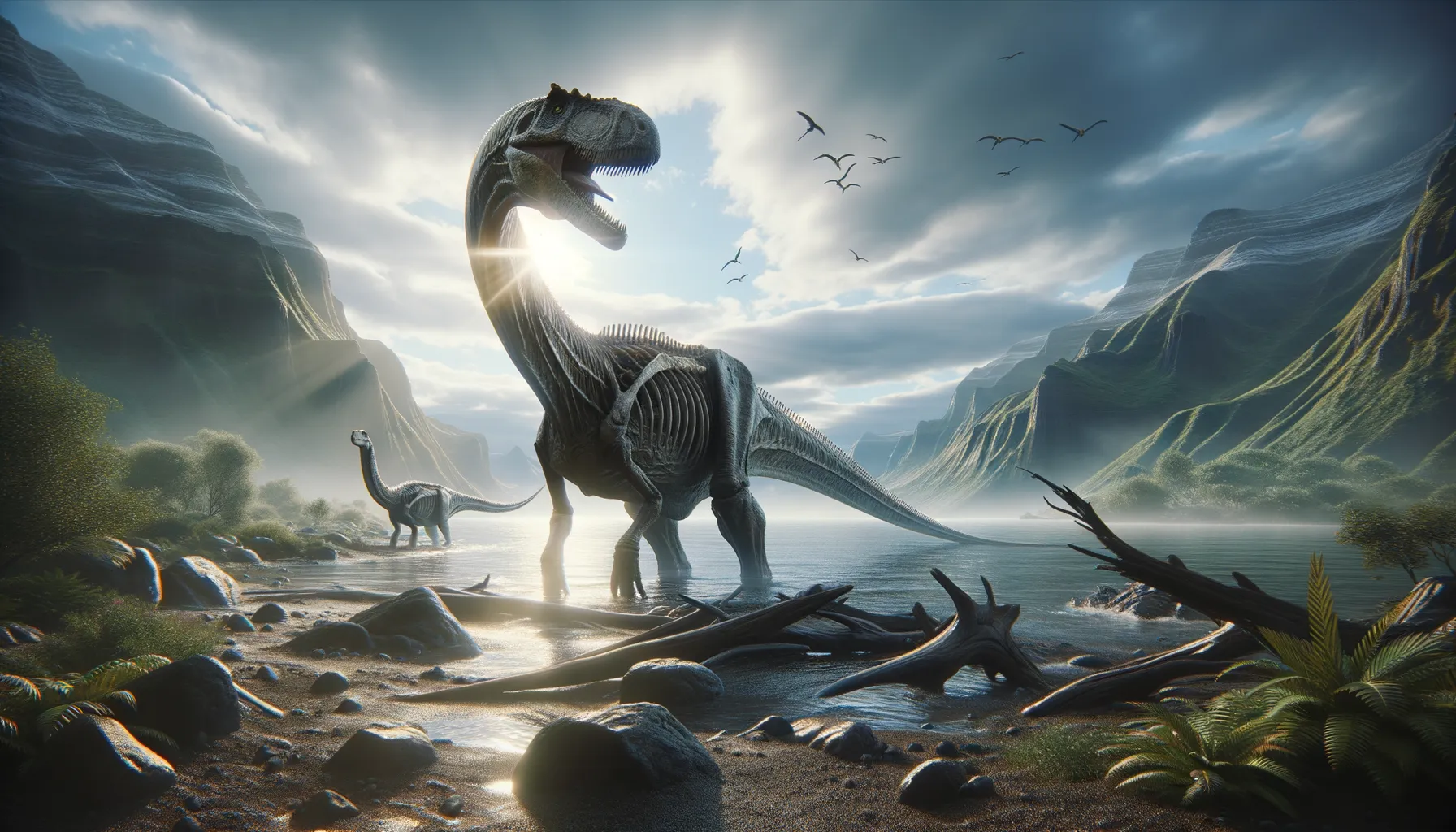
Xenoposeidon
The Mysterious Giant of Ancient England
Period
Cretaceous
Length
Length was possibly over 15 meters.
Height
Height could reach several meters.
Weight
Estimated to weigh several tons.
Xenoposeidon was a large sauropod dinosaur, known for its massive size and long neck. It lived during the Cretaceous period and is primarily known from limited fossil remains. Its discovery highlighted the diversity of sauropods in the United Kingdom and raised questions about their evolution and classification. Despite being known from partial fossils, Xenoposeidon has sparked interest due to its unique skeletal features, hinting at an uncommon lineage among its kind.
Diet
Xenoposeidon was a herbivore, feeding primarily on plants. Its long neck allowed it to reach vegetation high in trees, enabling it to access food sources that might be out of reach for shorter dinosaurs.
Hunting
Being a herbivore, Xenoposeidon did not hunt other animals for food. Instead, it spent a significant amount of time foraging for plant material to sustain its large body size.
Environmental challenges
Xenoposeidon faced environmental challenges such as changes in climate and vegetation. These could have influenced food availability, driving it to adapt to different plant types. Its large size might have also required vast areas to move and graze, which would be crucial if resources became scarce. Predation by large theropods could have been another concern, although its size and possible group living might have offered some deterrence.
Speed
Believed to be relatively slow due to its size.
Lifespan
Potential lifespan of several decades.
First discovery
First identified from bone found in England.
Fun Facts
- Xenoposeidon was a sauropod dinosaur, known for its massive size and long neck.
- Its fossil remains were discovered in England, specifically from the Wealden Formation in East Sussex.
- Xenoposeidon lived approximately 140 million years ago during the Early Cretaceous period.
- The name 'Xenoposeidon' means 'strange Poseidon', named after the Greek god of the sea due to the peculiar structure of its vertebra.
- Only a single vertebra fossil was initially found, making it a bit of a mystery to paleontologists.
- Xenoposeidon was identified and named in 2007, which was relatively recent in the world of dinosaur discoveries.
- Despite limited fossil evidence, Xenoposeidon is believed to have had the typical long neck and tail of a sauropod dinosaur.
Growth and Development
Xenoposeidon likely experienced slow and steady growth over many years. As a sauropod, it could have had growth spurts to reach its vast size. Its bones would have needed to be strong yet light to support its enormous body, a common characteristic among such dinosaurs. Development from juvenile to adult might have involved changes in body proportion, especially in neck and tail length.
Habitat
Xenoposeidon lived in a landscape that included coniferous forests and open plains. These areas provided the plant material needed for grazing and enough space for its massive form to move around. Water bodies could have been vital for sourcing hydration and regulating temperature. The environmental diversity would support various plant life, crucial for a large herbivore like Xenoposeidon.
Interaction with other species
Xenoposeidon may have coexisted with other dinosaur species, being part of a diverse ecosystem. Its large size could have offered protection against predators, either through intimidation or by living in groups. Competition for resources from other herbivores might have been a challenge, necessitating efficient foraging strategies. It's possible that smaller animals used its presence to gain access to hard-to-reach plant material dislodged during feeding.
Natural lifespan
Xenoposeidon may have naturally lived up to several decades.
Reproduction
Xenoposeidon, like other sauropods, likely laid eggs, which were incubated naturally in the environment. Breeding would require considerable investment, given the size and developmental needs of the offspring. Parental care specifics remain unclear, though communal nesting sites might have been common, offering protection or environmental advantage.
Social behaviour
Xenoposeidon might have exhibited social behavior typical of some sauropods, possibly living in herds or loose groups. This social structure would help in protection against predators and facilitate movement across vast distances in search of food. Interactions could include vocalizations or body language to communicate within the group. Such behavior might have been crucial in teaching young dinosaurs necessary survival skills.
Fossil locations
Fossils of Xenoposeidon have primarily been found in England, highlighting its presence in that region during the Cretaceous period. The discovery in the United Kingdom underscores the importance of the area for understanding dinosaur evolution and diversity. Further excavation in the region could provide more insight into the life and ecology of this intriguing species.
